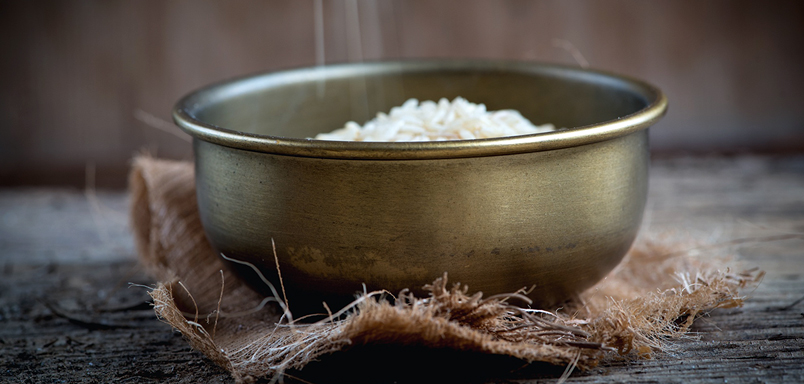Portion Size, Genes, and Traditional Wisdom
About 15,000 years ago humans started to cultivate rice in China. Rice cultivation then spread throughout much of Asia, although there remained pockets, usually in mountainous areas, where rice consumption was limited. Once people started eating rice there was soon a variation in their AMY1 gene. This variation allowed them to digest and thrive on the starch in carbohydrates, without the risk of diabetes or obesity. People whose ancestors come from regions where starch, such as potatoes and rice, have been eaten for thousands of years typically, but not always, have higher copy numbers of the AMY1 gene.
An assumption might be made that people who live in the starch growing regions in the world can eat rice without worrying about portion size. This is not the case. The historical record reveals two important features about how people traditionally ate rice. The first point is that people in different regions often ate with either their hands or with chopsticks. This is more significant than might be first thought. Recently, scientists in Singapore conducted a study in which they measured the blood sugar responses to eating rice in different ways. They found that when people eat rice with chopsticks they have a significantly lower blood sugar response to the rice. The probable reason is that chopsticks force a person to eat more slowly, and to chew more, allowing for the starch to be digested.
The second feature of traditional eating habits is portion size. It’s very easy to eat large amounts of rice quickly when eating with a spoon off a plate. But take a trip to a major museum that has an Asian history collection and take a look at the old rice bowls. These are very small and reveal the traditional portion size. Typically, this is the size of a person’s hand. If this amount it eaten with chopsticks a number of things happen:
- The blood sugar response is lower because the rice is eaten more slowly.
- Because the rice is eaten more slowly the brain registers satiety by the time the rice is finished. A person doesn’t feel like eating more. In contrast, wolfing down rice off a plate with a spoon means that the brain does not register a feeling of fullness until much too late, and by that time you’re usually feeling bloated and uncomfortably full.
- Less rice is likely to be eaten and there is much lower blood sugar response.
- Therefore, the risk of diabetes and obesity is hugely reduced.
Now put these traditional eating practices together with the genetic inheritance of the rice cultivating regions of the world. We mentioned that the inhabitants of these regions often, but not always, have a genetic variation (the AMY1 gene) that allows them to digest starch better than other populations. This means that these people are naturally better able to digest starch, when they do have it they eat it slowly (due to either chopsticks or using their hands), and their portions sizes are much smaller. The result is a lean, healthy, energized body.
Now compare this with people who lack the genetic inheritance to digest starch, who eat fast with a spoon, and who eat off a plate — perhaps several plates. The result is diabetes, inflammation, obesity, and probably an early death.

